Personal identity solutions play a crucial role in ensuring accessibility, usability, and overall user satisfaction. By focusing on inclusive design and adhering to established design standards, these solutions cater to diverse user needs, allowing individuals to engage effectively with identity systems. Prioritizing user experience principles enhances navigation and interaction, ultimately fostering trust and security in identity management systems.

What are the best personal identity solutions for accessibility in the UK?
The best personal identity solutions for accessibility in the UK focus on inclusive design, assistive technologies, and user testing practices. These solutions aim to ensure that individuals with diverse needs can effectively engage with identity systems, enhancing their overall experience.
Accessible design frameworks
Accessible design frameworks provide guidelines for creating products that everyone can use, regardless of their abilities. In the UK, adhering to the Web Content Accessibility Guidelines (WCAG) is essential for ensuring digital identity solutions are usable by people with disabilities.
When implementing accessible design, consider principles such as perceivability, operability, understandability, and robustness. For instance, using high-contrast colors and clear typography can significantly enhance readability for users with visual impairments.
Assistive technology options
Assistive technology options play a crucial role in personal identity solutions by enabling users to interact with systems effectively. Common tools include screen readers, voice recognition software, and alternative input devices, which help individuals with various disabilities access identity information.
In the UK, popular assistive technologies like JAWS, NVDA, and Dragon NaturallySpeaking are widely used. It’s important to ensure that identity solutions are compatible with these technologies to provide seamless user experiences.
Inclusive user testing practices
Inclusive user testing practices involve engaging a diverse group of users to evaluate identity solutions. This approach helps identify accessibility barriers and ensures that the design meets the needs of all users, including those with disabilities.
To implement effective user testing, recruit participants with varying abilities and backgrounds. Conducting tests in real-world scenarios can provide valuable insights into how well the identity solution performs across different contexts, leading to improved accessibility and user satisfaction.
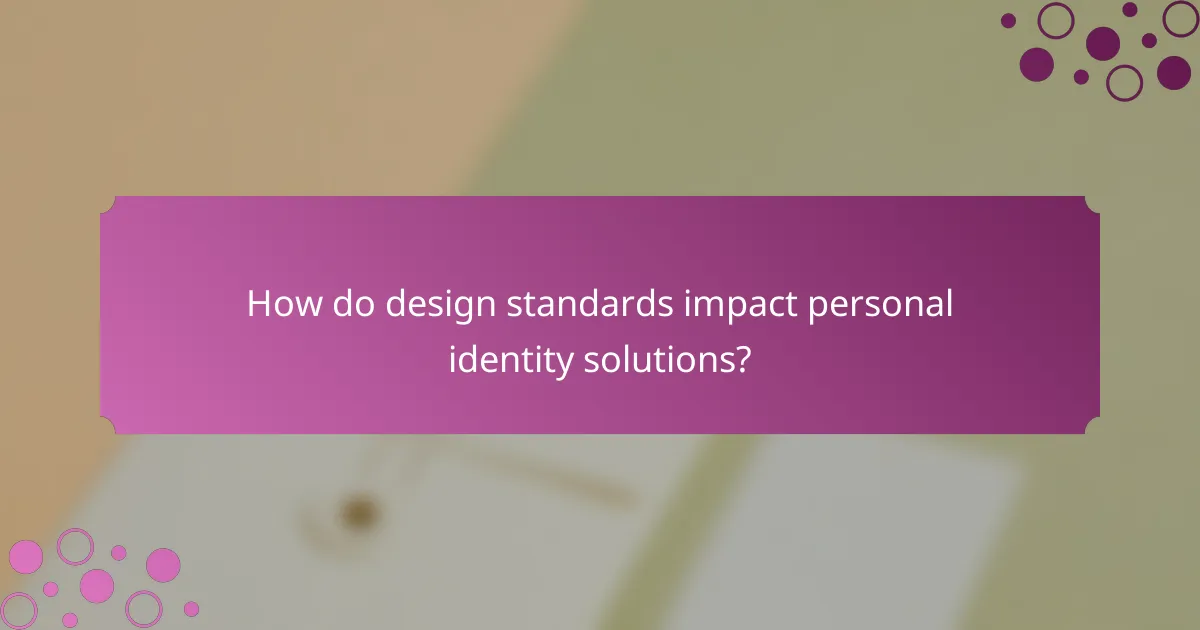
How do design standards impact personal identity solutions?
Design standards significantly influence personal identity solutions by ensuring they are accessible, usable, and consistent across various platforms. Adhering to these standards helps organizations create systems that accommodate diverse user needs, enhancing overall user experience and trust.
Web Content Accessibility Guidelines (WCAG)
The Web Content Accessibility Guidelines (WCAG) provide a framework for making web content more accessible to people with disabilities. These guidelines focus on four principles: perceivable, operable, understandable, and robust, which help ensure that personal identity solutions can be used by everyone, regardless of their abilities.
To implement WCAG effectively, organizations should conduct regular accessibility audits and user testing with individuals who have disabilities. Common pitfalls include neglecting mobile accessibility and failing to provide alternative text for images, which can alienate users who rely on assistive technologies.
ISO standards for design
ISO standards for design, such as ISO 9241, focus on ergonomics and user-centered design principles. These standards guide the development of personal identity solutions by emphasizing usability, user satisfaction, and the importance of considering user feedback throughout the design process.
Organizations should integrate ISO standards into their design workflows by establishing clear user personas and conducting usability testing. This approach helps identify potential issues early and ensures that solutions meet user expectations, ultimately leading to higher adoption rates and improved user experiences.
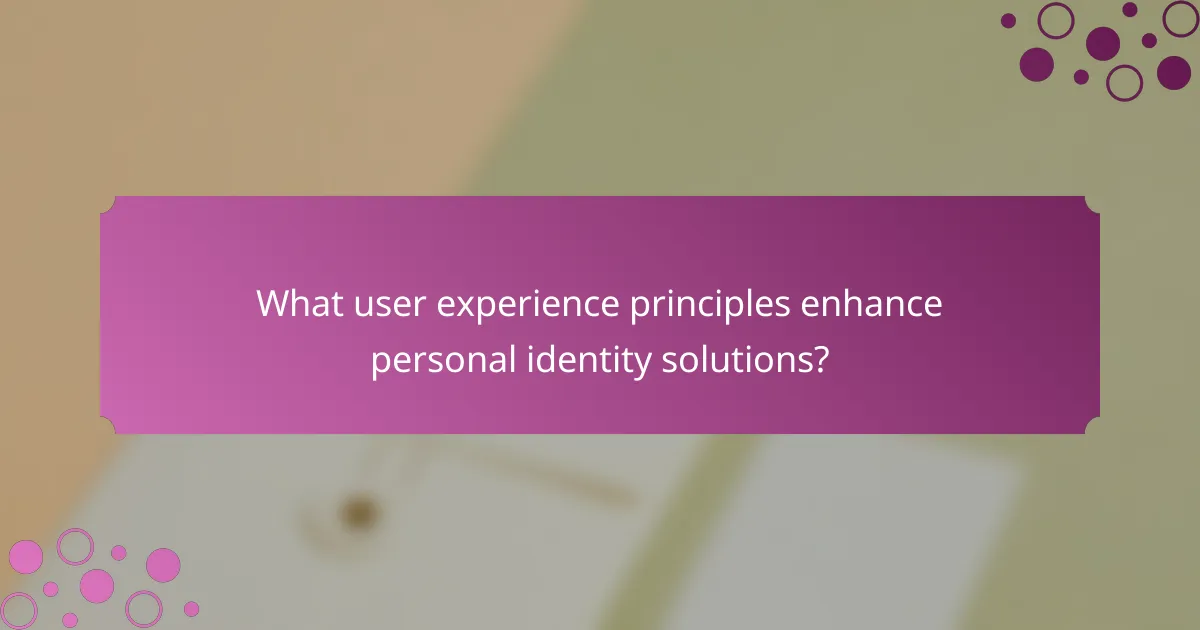
What user experience principles enhance personal identity solutions?
User experience principles that enhance personal identity solutions focus on accessibility, usability, and user satisfaction. These principles ensure that users can easily navigate and interact with identity management systems, leading to a more secure and efficient experience.
User-centered design approaches
User-centered design approaches prioritize the needs and preferences of users throughout the development process. This involves conducting user research to understand how individuals interact with identity solutions, allowing designers to create intuitive interfaces that meet user expectations.
Key practices include usability testing and iterative design, where feedback from real users is incorporated into each design cycle. For instance, using wireframes and prototypes can help identify potential issues early, ensuring a smoother final product.
Feedback mechanisms for user improvement
Implementing feedback mechanisms is crucial for continuous improvement of personal identity solutions. These mechanisms can include surveys, user interviews, and analytics that track user behavior, helping developers understand pain points and areas for enhancement.
Effective feedback should be easy for users to provide and should lead to actionable insights. For example, integrating a simple rating system or comment section within the application can encourage users to share their experiences, which can then be analyzed to inform future updates and features.
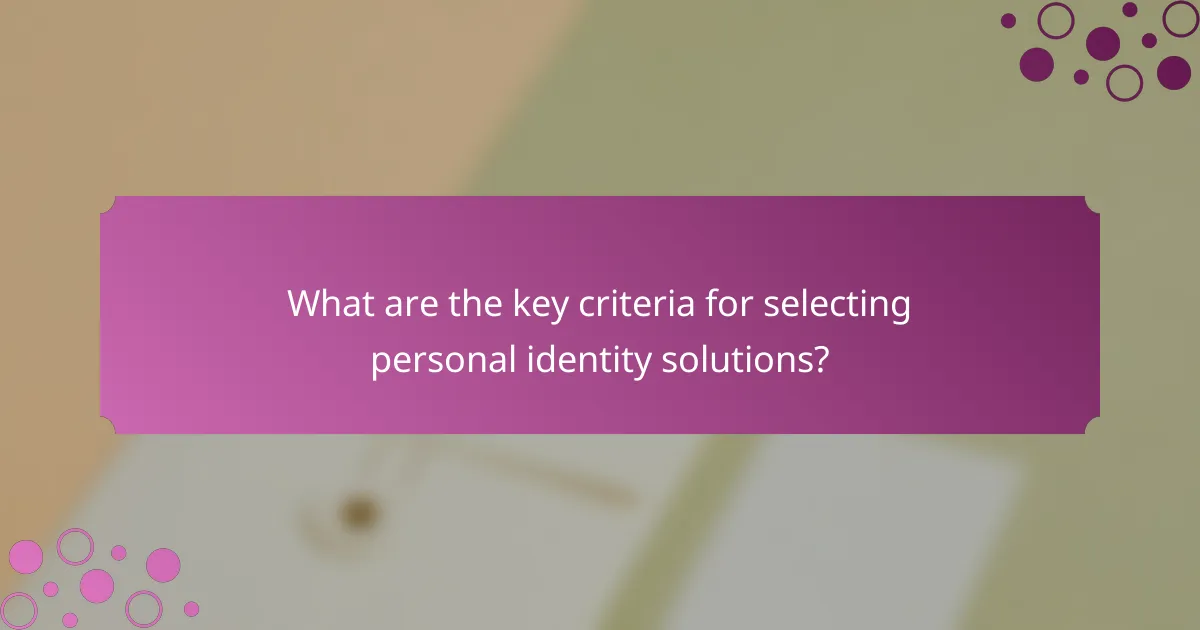
What are the key criteria for selecting personal identity solutions?
When selecting personal identity solutions, key criteria include compliance with accessibility regulations and integration with existing systems. These factors ensure that the solutions are usable for all individuals and can work seamlessly within current technological frameworks.
Compliance with accessibility regulations
Compliance with accessibility regulations is crucial for personal identity solutions, as it ensures that all users, including those with disabilities, can access and use the system effectively. Familiarize yourself with standards such as the Web Content Accessibility Guidelines (WCAG) and the Americans with Disabilities Act (ADA) in the U.S., or the Equality Act in the U.K.
When evaluating solutions, check if they provide features like screen reader compatibility, keyboard navigation, and customizable display options. Solutions that prioritize accessibility not only meet legal requirements but also enhance user experience and broaden your audience.
Integration with existing systems
Integration with existing systems is essential for a smooth implementation of personal identity solutions. Consider how well the new solution can connect with current databases, authentication systems, and user management tools. A solution that offers APIs or pre-built connectors can significantly reduce integration time and costs.
Before making a decision, assess the compatibility of the solution with your existing infrastructure. Solutions that require extensive modifications may lead to increased expenses and longer deployment times. Aim for options that allow for easy data migration and minimal disruption to ongoing operations.
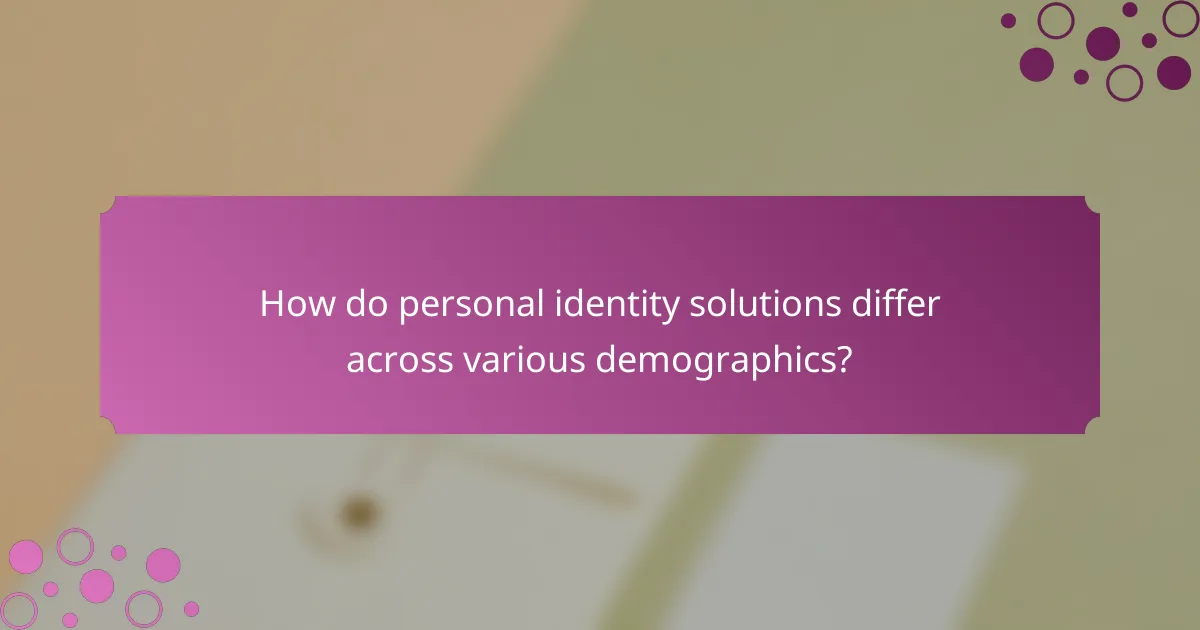
How do personal identity solutions differ across various demographics?
Personal identity solutions vary significantly across demographics due to differing needs, preferences, and accessibility requirements. Factors such as age, physical ability, and technological familiarity influence the design and implementation of these solutions.
Solutions for elderly users
For elderly users, personal identity solutions should prioritize simplicity and ease of use. Interfaces should feature larger text, clear navigation, and minimal distractions to accommodate potential visual impairments and cognitive challenges.
Examples include voice-activated systems and simplified mobile applications that allow for easy access to identity verification without requiring complex interactions. User testing with seniors can help identify common pitfalls and improve overall usability.
Solutions for users with disabilities
Solutions for users with disabilities must adhere to accessibility standards, such as the Web Content Accessibility Guidelines (WCAG). This ensures that all users can interact with identity solutions effectively, regardless of their physical limitations.
Key considerations include providing alternative text for images, keyboard navigation, and screen reader compatibility. Implementing these features not only enhances user experience but also broadens the reach of identity solutions across various disability groups.
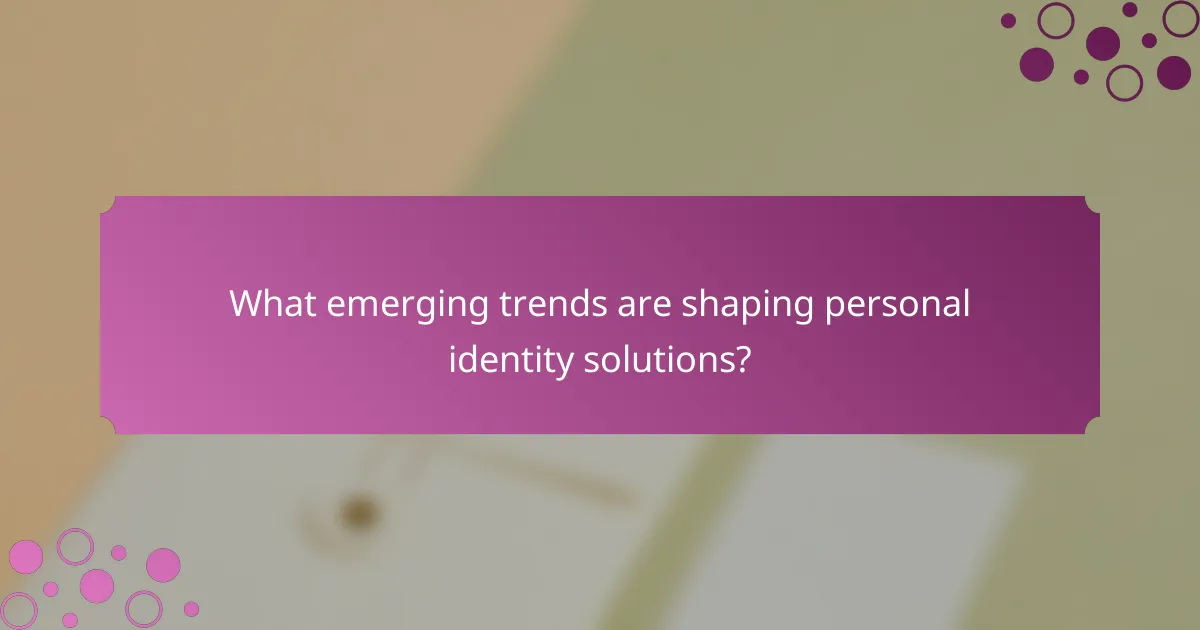
What emerging trends are shaping personal identity solutions?
Emerging trends in personal identity solutions focus on enhancing security, user experience, and adaptability to individual needs. Key developments include AI-driven personalization and blockchain technology, which are transforming how identities are verified and managed.
AI-driven personalization
AI-driven personalization tailors identity solutions to individual user preferences and behaviors. By analyzing data patterns, AI can create customized experiences that improve user engagement and satisfaction.
For example, platforms can suggest security settings or authentication methods based on a user’s past interactions. This not only enhances usability but also increases security by adapting to the user’s unique habits.
When implementing AI-driven personalization, ensure that data privacy regulations, such as GDPR in Europe, are followed to protect user information. Avoid over-reliance on AI; maintain a balance between automated suggestions and user control.
Blockchain for identity verification
Blockchain technology offers a decentralized approach to identity verification, enhancing security and trust. By storing identity data on a distributed ledger, blockchain reduces the risk of data breaches and unauthorized access.
For instance, digital identities can be verified without relying on a central authority, allowing users to maintain control over their personal information. This method is gaining traction in sectors like finance and healthcare, where secure identity management is crucial.
When considering blockchain for identity solutions, evaluate the scalability and integration with existing systems. Be aware of the regulatory landscape, as different countries may have varying laws regarding blockchain applications and data protection.


